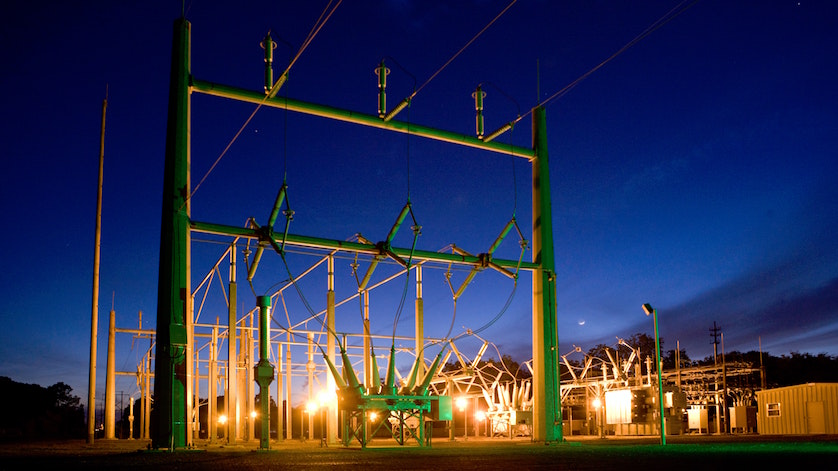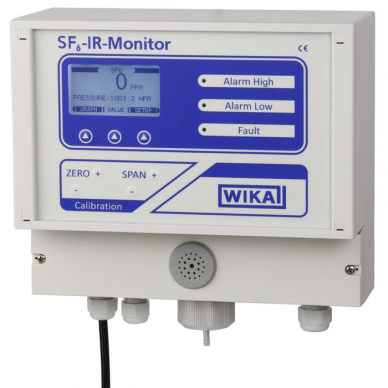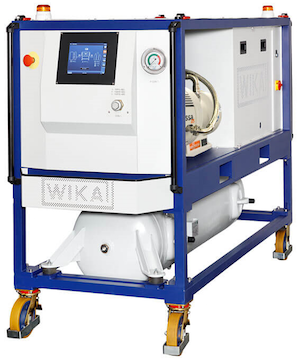
Sulfur hexafluoride, a highly effective insulator and arc quencher, is commonly found in the power transmission and distribution industry. But to protect equipment, personnel, and the environment, users must be aware of the common SF6 gas hazards and how to avoid them.
Sulfur hexafluoride (SF6), when sealed inside power transmission and distribution(T&D) equipment, insulates switchgears, circuit breakers, and disconnectors by quenching dangerous arcs. This stable and nontoxic gas, which has excellent dielectric strength, is a key component in a power plant’s safety and efficiency. However, leaks can be dangerous on several fronts.
Here are some of the main SF6 gas hazards, followed by ways to avoid them.
1. Global warming
Carbon dioxide is the most abundant greenhouse gas (GHG), but it doesn’t come close to SF6 in terms of potency. This fluorinated gas can last in the atmosphere for 3,200 years before it is broken down by UV rays, and is 22,800 times more effective than CO2 at trapping infrared radiation in the atmosphere, according to the Environmental Protection Agency. In fact, SF6 has the highest Global Warming Potential (GWP) of any known gases.
2. Equipment failure
A leak in gas-insulated equipment means there is less gas to protect it from the effects of electrical arcs. The results are lost signals, short circuits, malfunctions, and, ultimately, equipment failure that compromise safety and operations. Even a 10% gas loss can permanently damage insulators, shields, arcing contacts, and main contacts.
With equipment failure comes repairs and replacements, expensive in terms of both time and money. There could also be property damage, such as fires, and extended power outages resulting from poorly insulated equipment — potentially a public relations nightmare.
Leaks also allow moisture to enter gas-insulated equipment. This is a major problem as the presence of water not only decreases insulation, but also combines with SF6 gas to create toxic byproducts that corrode metal and create more leaks.
3. Health risk
SF6 is nontoxic and poses no direct risks to people or animals. It fact, this gas is used in medical diagnostics. However, due to its heavier weight, escaped SF6 can settle in low-lying areas and displace the oxygen there. This can cause respiratory problems in personnel working in trenches and pits, especially when breathed in large quantities.
How to Avoid SF6 Gas Hazards

GA35 emission monitor for SF6 gas
The best way to avoid SF6 gas hazards is to continually monitor gas-insulated equipment for both quantity (to detect leaks) and quality (for current gas conditions). Then, when the gas has dropped below a certain level of purity, technicians can clean it. Here are just a few of WIKA USA’s innovative SF6 gas solutions for greater safety and efficiency:
- Model GDHT-20is an integrated gas transmitter that measures density, pressure, humidity, and temperature. Based on these measurements, the unit uses a virial equation to calculate density. The GDHT-20 also constantly monitors the moisture content of a chamber and will alert technicians when conditions are ripe for the formation of toxic decomposition products.
- Model GA35is especially designed to monitor SF6 levels in ambient air within enclosed spaces. Its infrared sensor is impervious to humidity and common volatile organic compounds (VOC), and provides continuous measurements to ensure occupational safety.
- Model GAD-2000is an innovative gas dehydration system that dries SF6 without having to stop operations. It removes a portion of the gas from gas-insulated switchgear, runs it through a series of compressors and filters, and then returns the dehydrated gas to the equipment – all with minimal human intervention.

GPU-S-3000 SF6 gas handling unit
- Model GPU-S-3000is an all-in-one gas servicing unit that fills, cleans, recovers, and stores SF6 gas. It has additional SIL2 safety controls for the highest level of performance, which virtually eliminates operating errors and fugitive SF6 gas emissions.
WIKA is a global leader for innovations that significantly reduces the risk of SF6 gas hazards. For more information about our comprehensive portfolio of SF6 gas solutions, download this brochureor contact product specialists.
Products mentioned in this article:
• Model GDHT-20 transmitter with MODBUS® output for indoor/outdoor SF6 gas-insulated equipment
• Model GA35 emission monitor for SF6 gas
• Model GAD-2000 gas dehydration system for SF6 gas-filled equipment during operation
• Model GPU-S-3000 SF6 service equipment for filling, cleaning and the recovery of SF6 gas


Hi,
I read your blog on Common SF6 Gas Hazards and How to Avoid Them. I would like to know what will happen in case dew point results are not satisfactory. Please share if any incident had occurred due to low dew any where in the world in any SF6 related equipment. Moreover, Even a 10% gas loss can permanently damage insulators, shields, arcing contacts, and main contacts. Additionally, would you please quote the reference of research paper or white paper which indicates this fact that 10% gas loss would damage the equipment as well.
Hi Syed. Thank you for your comment. A product manager should be reaching out to you shortly if they have not already.
Can sf6 gas be close to residential buildings (3-7 meters) and if so, is it dangerous
Hey Trixie. Thank you for your comment. A product manager should be reaching out to you shortly if they have not already.